Step-Up Exercise
Table of Contents
The Step-Up Exercise: What Is It?
Step-ups are a straightforward yet efficient lower-body strength-training exercise that concentrates on the muscles in the legs and buttocks. One leg at a time entails stepping up onto an elevated platform or step before walking back down. Using your own weight or extra weights for more resistance, complete this workout that simulates ascending stairs.
Step-up exercises are frequently used as part of fitness regimens to increase lower body strength, enhance balance, and work numerous muscle groups at once. They may be customized to accommodate different fitness levels as well as personal tastes and goals. We will examine the advantages, appropriate techniques, variants, and safety issues related to the step-up exercise in this talk.
Introduction
This exercise for training the lower extremities is well-known. The step-up is easily progressed or regressed for all fitness levels, and it can be included in practically any training program to develop the unilateral strength and muscle mass of your quadriceps and glutes. This article will explain how to perform it, the muscles that are worked, tips, safety considerations, and variants to mix up your step-up routine.
You’ll need a tiny step stool for this exercise, or you can simply stand in front of the steps. Raise your body onto the step, mostly using your lead foot. then take a step back to your starting position.
Keep your back straight and your abdominal muscles tight when performing step-ups. Ensure that your foot is fully planted on the step. Starting with a modest step height is acceptable as well. Your form is more important than step height for this exercise. Alternate your lead foot each time you complete this exercise. Depending on your level of fitness, perform as many repetitions as you can; stop when you are exhausted or your form begins to deteriorate.
Always maintain your back straight and plant your foot firmly on the step for best results. Keep your movements regulated and fluid.
Muscle trained
With the exception of when you use load, the step-up mostly engages the legs and core with little to no participation from the upper body. These are the specific muscles that the step-up trains.
Quadriceps: To straighten the knee, the four quadriceps muscles work in tandem.
Glutes: Because the hip is flexed, the glutes stretch to assist you in standing up.
Hip adductors: These muscles provide support for the knee to prevent folding inwards during hip flexion.
Hamstrings: Help the glutes with hip extension, and your lower body control is improved by the eccentric strength of your hamstrings.
Plantar flexion occurs little during the step-up, but your calf muscles work ceaselessly to keep you balanced on one leg.
Step-up exercise’s health advantages include:
- Adding weight to this exercise is the bomb once you have mastered the bodyweight step-up. Increasing the weight will improve muscle growth between the sides, increase unilateral strength, and make climbing the stairs simpler. Here are a few more noteworthy benefits of the step-up.
- Improved Single-leg Balance: Because you are managing yourself while you step up and down on one leg, step-ups will improve your equilibrium and proprioception (feeling of attention in space). You’ll also be more attentive since you don’t want to fall over in front of everyone else at the gym.
- Better Unilateral Strength And Muscle Development: Bilateral activities are excellent and where most of your improvement takes place, but sometimes they might mask muscle and strength imbalances between the legs. Examples of single-leg workouts that support these imbalances and enhance gluteal and quadriceps muscle growth are step-ups.
- Accessible And Easily Progressed: All you need to perform step-ups is a box, a bench, and some weights, making them accessible to both inexperienced and seasoned lifters. It requires little teaching and is not a technology exercise like barbell squats and deadlifts. Additionally, it is simple to move by boosting the box’s height and making use of larger weights.
- Easy on the Lower Back: Similar to other single-leg exercises, this one puts less pressure on your spine since there is less compressive force on it. Furthermore, because of the unilateral disposition, unlike back squats and Romanian deadlifts, you don’t need as much weight to obtain a training benefit.
- May Improve Your Barbell Squat: One technique to combat the typical weakness of the barbell squat, which is climbing slowly or getting stuck in the hole, is to increase leg drive. Squat variations like split squats and break squats are great options but don’t forget the step-up. Step-ups, which place more of a focus on your glutes and quadriceps and your capacity to load up, are another workout you can do to strengthen your leg drive.
Step-Up Exercise Form Advice:
Because you put your foot on a box and step up, it appears to be nothing. Yes, this is true, but there are certain steps to take in order to maximize the benefits of the step-up.
- Choosing Your Box Height: A general rule of thumb for box height is that your knee should make a 90-degree angle when your foot is on the box. Stepping up on a shorter box is advised if knee discomfort is a problem if you are new to this sport. When feeling daring, raising your box height so that your knee is slightly over your hips is also fantastic. More range of motion offers more opportunities to grow muscle. However, it would be best if you produced a few sentences. First, your anterior and posterior cores suffer if your trunk leans too far forward. The only muscles you should emphasize are your quadriceps and glutes, not your lower back. Second, your knee or hips can give way when you try to take a higher step, which might cause injury. Keep your range of motion within what you can manage, and you shouldn’t have any problems.
- Control The Eccentric: When you’re weary, you may have a propensity to lower your back foot to the floor and let the eccentric contraction go out of control. Not only is this bad for your joints, but you also lose out on building muscle and strength. Ever attempted to manage the step-up’s falling portion
- Allow the front leg to carry the load: To assist your quadriceps and glutes expand, the front leg should do the lifting at the end of the step-up. However, there may be a tendency to push off the rear leg as the weight increases in weight and the lifter grows fatigued. By doing this, the front leg loses muscle tension and is more comfortable for the leading leg, but you must employ speed.
Step-Up Programming Suggestions
The step-up is an exercise that supports side imbalances and improves muscular growth, but it should not be confused with endless strength training because it is a separate exercise. Nobody takes pride in their maximum one-rep step-up.
For hypertrophy: Three to four sets of eight to fifteen repetitions on each side, along with another glute or quad workout, are helpful.
- 1A. 10–15 repetitions of the weighted step up on each side
- 1B. 10–20 repetitions of bodyweight hip thrust
Use your own weight or a small load to feel the burn for two to three sets of 15 to 20 repetitions on each side for endurance. Afterward, your heart will be racing, so combining this with a foundation workout is beneficial. For instance:
- 1A. 15–20 repetitions of step-ups on each side
- 1B. 10 repetitions of passive leg lowering on each side
How are step-ups performed?
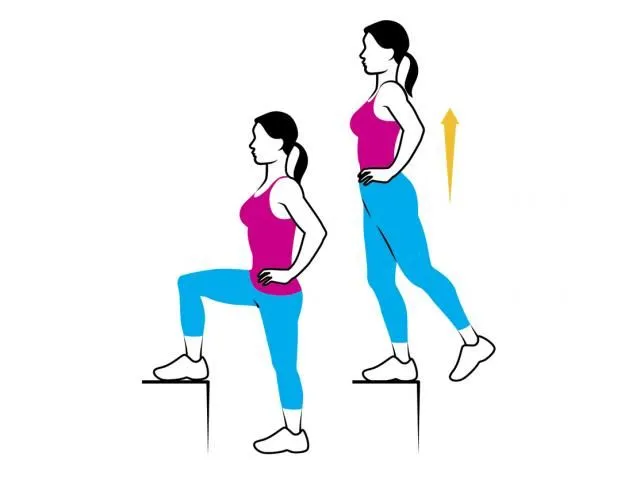
- Put your foot on a box with your knee bent at a 90-degree angle or with your hip crease just below your knee, depending on your hip flexibility and strength. Make careful you utilize a level surface.
- Either do so while standing approximately one foot outside the box.
- With your toes pointed forward, place your whole lead foot on the box.
- To stand up, use your lead foot. When standing up, visualize extending your hips by moving your glutes forward.
- You can choose to balance on one leg after raising your knee, place another foot on the box, or press your inactive leg onto the lifted knee.
- With the non-leading leg, take a slow step down. Reset, then do it again.
Variation of step-up exercise:
Dumbbell step-ups
Beginners through Advanced
Dumbbells and a step or plyo box are required tools.
- As you stand in front of the step box, your feet should be hip-width apart. tighten your core.
- Hold a dumbbell in each hand when using dumbbells.
- Put your right foot on the base of the box while you push through your right foot to lift your body off the ground and place your left foot on the platform.
- When performing pushups, focus on using your glutes and keeping your spine straight.
- Put your left leg back on the floor. Concentrate on utilizing your leg muscles to control the drop.
- Following the completion of repetitions, you can swap or alternate between legs.
Barbell step-ups
Level: Advanced to Intermediate
Equipment: Step or plyo box, barbell-equipped squat rack
Given that the weight may be gradually increased each week, barbells are a great technique to introduce developed overload.
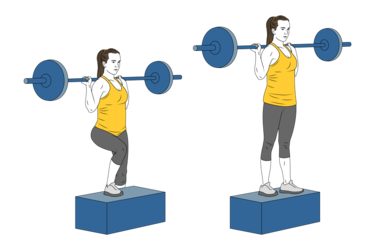
- Set the barbell beneath the rack so that the box or step is in front and the barbell is just below shoulder height.
- Put some work into lifting the barbell, then carry it with both hands. To unrack the barbell and go to a standing position in front of the box, stand tall.
- Put your abs under tension while you stand tall.
- Drive your body up and onto the box with your right foot by placing your left foot there and pushing up through the foot. focused on tightening your glutes to create movement.
- Smoothly and steadily lower your left foot back to the ground.
- Then, swap sides after as many repetitions as necessary.
Side step-ups
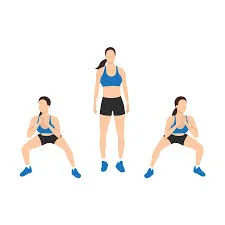
Level: Advanced to Intermediate
Equipment for the sidestep to squat
- As you lean sideways, put your left leg next to the step or box. Hold a neutral spine and tighten your core.
- Place your right foot on the box, then use the heel of this foot to compress while you lift your body up and onto the platform with your left leg.
- Return your left leg to the floor, being careful to control it rather than letting it slip.
- Place your right foot firmly down on the floor. It has only been done once.
- Then, swap sides after as many repetitions as necessary.
Common mistakes
Avoid these blunders to maximize the benefits of this exercise and lower the chance of harm.
Knee Passing Toes
When you stand up, watch your good leg’s knee to make sure it doesn’t extend past your toes. When the knee is pushed far forward, different muscles are used, which puts extra strain on the knee joint.
Knee Out of Alignment
Your healthy leg’s knee should pass over your second and third toes. Avoid allowing it in or out by avoiding it.
Placing Your Legs Together
In general, the leading leg should be used as the source of motion, with the trailing leg acting as a dead weight. Using the lower leg to exert pressure lessens the burden on the leading leg.
Going Around the Back
Leaning forward a little bit could be necessary to prevent stress on your knee joint. Hold your body as straight and erect as you can while performing, and make sure your chest is up rather than bending your back.
Safety and Precautions
If you have experienced injury or disease that has affected your knees, ankles, or hips, speak with your doctor or physical therapist to see whether this exercise is appropriate for you. This exercise will make your muscles work, but if you experience any discomfort in these areas, stop.
When starting this exercise, choose a step that is lower to the ground and do it without any weight. Your goals and the sort of activity you are engaging in will have a significant impact on how quickly you complete the step-up action.
Step-ups with no weights or only a small amount of weight, performed fast, with a lot of repetitions each set, will provide you an excellent aerobic exercise. You will probably slow down the movement as you add weight due to safety and difficulty concerns.
Anyone who lifts weights should wear a pair of weight-lifting sneakers that a trainer recommends.
FAQs
What advantages do step-up exercises offer?
Step-ups exercise the hamstrings, quadriceps, and gluteal muscles in the buttocks. In general, this lower-body conditioning exercise is helpful. A little step stool is needed to do a step-up. You might stop in front of the stairs as well.
How many step-ups should I do each day?
For muscular growth, try two to three sets of eight to ten repetitions on each leg with a modest weight.
To enhance balance, do two sets of 5-8 repetitions at a very slow pace.
Aim for two sets of 10 repetitions without adding weight for beginners.
Does squatting cause fat loss?
Generally speaking, step-ups can be used for any or all of the following: Make your lower body stronger. build muscle. (If your diet and exercise plan are effective for reducing fat) loss of body fat.
Are step-ups beneficial?
Consider a few benefits of including steop-ups into your regular fitness routine. Step-ups can increase your leg strength. Step-ups exercise your lower body’s glutes, adductors, hamstrings, quadriceps, and other muscles. Strength disparities can be corrected by step-ups.
What happens if you step up every day?
Step-ups will give your quadriceps, hamstrings, glutes, and adductors a terrific workout. They engage your body on many levels, pushing your lower body strength in a manner that standard workouts like squats and lunges do not.
What muscles are worked and exercised by step-ups?
A great workout for the muscles in your lower body is step-ups. They primarily work the quadriceps, glutes, hamstrings, and calves. primary muscles The hamstrings, quadriceps, and glutes are typically used when performing step-ups.
What benefits do side step-ups provide?
The unilateral leg is strengthened during the lateral step-up for better balance, while the bilateral leg is weakened for more strength. Furthermore, it improves hip stability and makes knee extension easier in the mechanically difficult region.
What distinguishes step-ups from side step-ups?
As compared to the traditional step-up, the side starting posture enables the athlete to move more like a squat as opposed to a lunge.

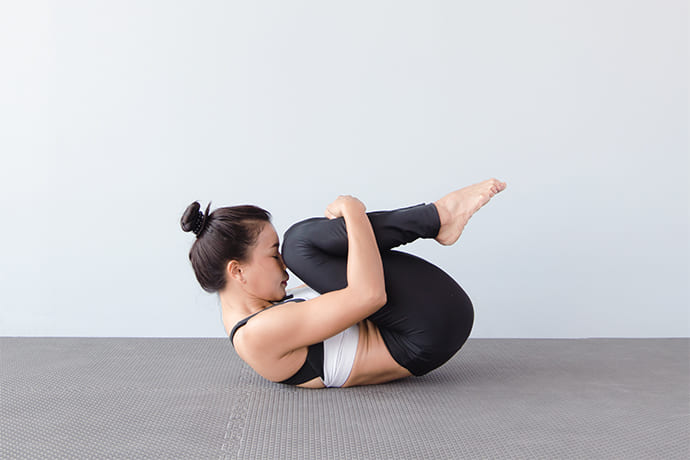

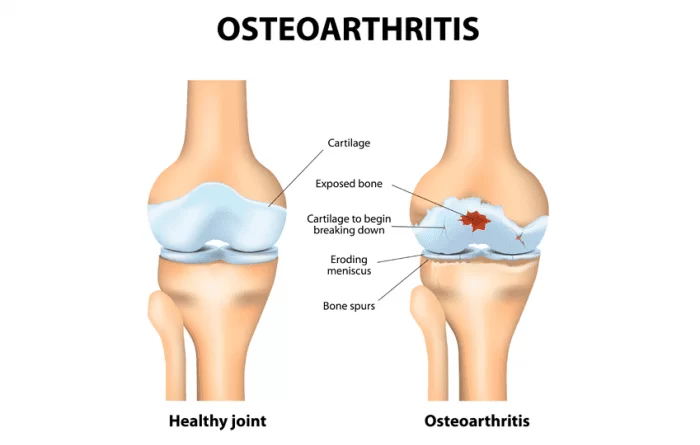

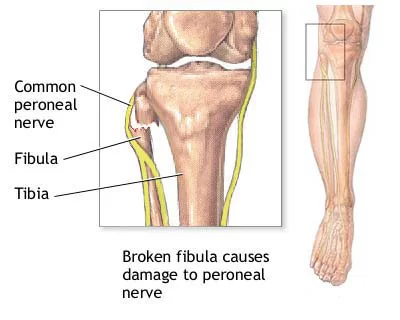
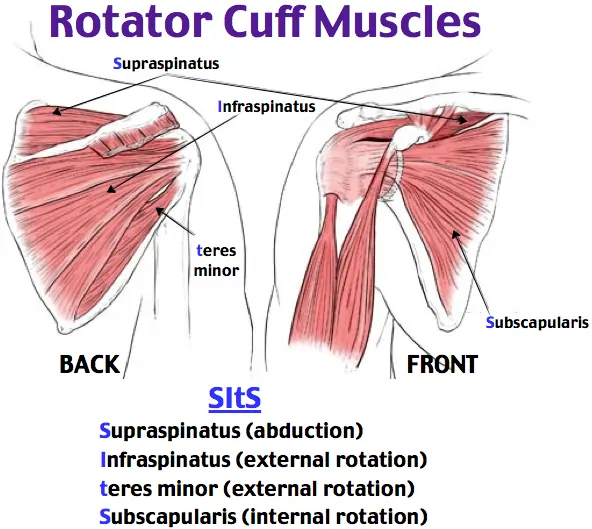
2 Comments